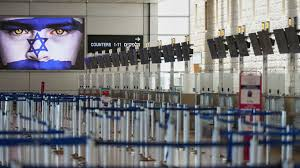Airlines Reel as Middle East Crisis Forces Costly Rerouting and Cancellations

💼 Middle East Crisis Sends Shockwaves Through Airline Industry: Costs Mount as Routes Rerouted
✈️ Introduction
The recent missile attack on Qatar’s Al Udeid Air Base and the sweeping airspace closures that followed have not only stranded passengers and paralyzed airports — they’ve exposed the airline industry’s acute vulnerability to geopolitical volatility. While global headlines focus on rerouted jets and disrupted travel, behind the scenes, airlines face a growing operational and financial storm with consequences stretching well beyond this week’s crisis.
💸 The Financial & Operational Toll
Airlines are now counting the costs — not just in grounded aircraft but in cascading financial impacts across nearly every department.
Impact Area Description
| Fuel Costs | Long-haul diversions consume more fuel, and aborted roundtrips offer no ROI.
| Passenger Care | Accommodation, meals, and rebooking for thousands — often mandated by law.
| Revenue Loss | Hundreds of cancelled flights translate to millions in lost ticket sales daily.
| Crew Disruptions | Legal rest requirements force costly crew rescheduling and repositioning.
A single international cancellation can cost anywhere from $200,000 to $500,000, depending on route length, aircraft type, and load factor. Multiply that across hundreds of flights, and the losses are staggering.
🧠 Expert Perspectives: “A Systemic Stress Test”
“The Gulf is not just a regional hub — it’s the backbone of east-west global aviation,” says Dr. Lara Benton, Aviation Risk Strategist at IATA.“When a coordinated airspace closure occurs across multiple countries, contingency planning is overwhelmed. This is not just a rerouting issue; it's a systems-level shock.”
The broader concern is the possibility of prolonged instability, which could lead to airlines permanently redrawing flight paths — a move that would increase operational costs long-term and test already strained global schedules.
🇮🇳 Case Study: Indian Carriers on the Frontline
Indian airlines, particularly Air India, Air India Express, and IndiGo, were severely impacted given their heavy reliance on Gulf routes for both point-to-point and connecting traffic.
- Doha-bound services were suspended or rerouted via longer paths over the Arabian Sea.
- Gulf expatriate workforce travel was disrupted, especially affecting southern India–Gulf routes.
- Europe/North America connectivity was delayed due to lack of overflight access.
“The economic link between India and the Gulf is too large to ignore,” notes aviation consultant Ramesh Joshi. “Expect higher fares and longer journey times in the near term.”
📦 Supply Chain Disruptions: Cargo Feels the Pinch
Passenger aircraft also move freight — particularly electronics, pharmaceuticals, and auto parts. Hundreds of cancelled flights meant cargo bottlenecks at transit hubs like Dubai, Doha, and Abu Dhabi.
- High-value, time-sensitive goods face multi-day delivery delays.
- E-commerce and manufacturing supply chains may see short-term shortages or backlogs.
- Freight forwarders are under pressure to find alternative capacity at higher cost.
The incident highlights how fragile global logistics systems are — and how easily regional conflict can ripple across continents.
🔍 Strategic Takeaways for the Industry
This crisis is likely to accelerate several long-term shifts in airline strategy:
- Geopolitical Risk Mapping: Airlines will deepen scenario planning beyond weather and technical failure.
- Distributed Hub Strategy: Overreliance on Gulf gateways may drive diversification to East Africa, Turkey, and India.
- Cargo Route Redundancy: Dual-use passenger/freight networks may be reassessed with more dedicated freighters added.
📍 Conclusion
The financial shock to airlines from this crisis will be measured in billions, but its strategic impact may last even longer. As skies reopen and operations resume, airlines are left to reassess their dependence on volatile regions, factor new risks into pricing models, and prepare for the possibility that the next closure could be even more disruptive.
For the flying public, the legacy of this event will likely be higher ticket prices, longer travel times, and a clearer understanding that even 21st-century aviation can be grounded by 20th-century geopolitics.
League Manager Editorial Team






Leave a Comment